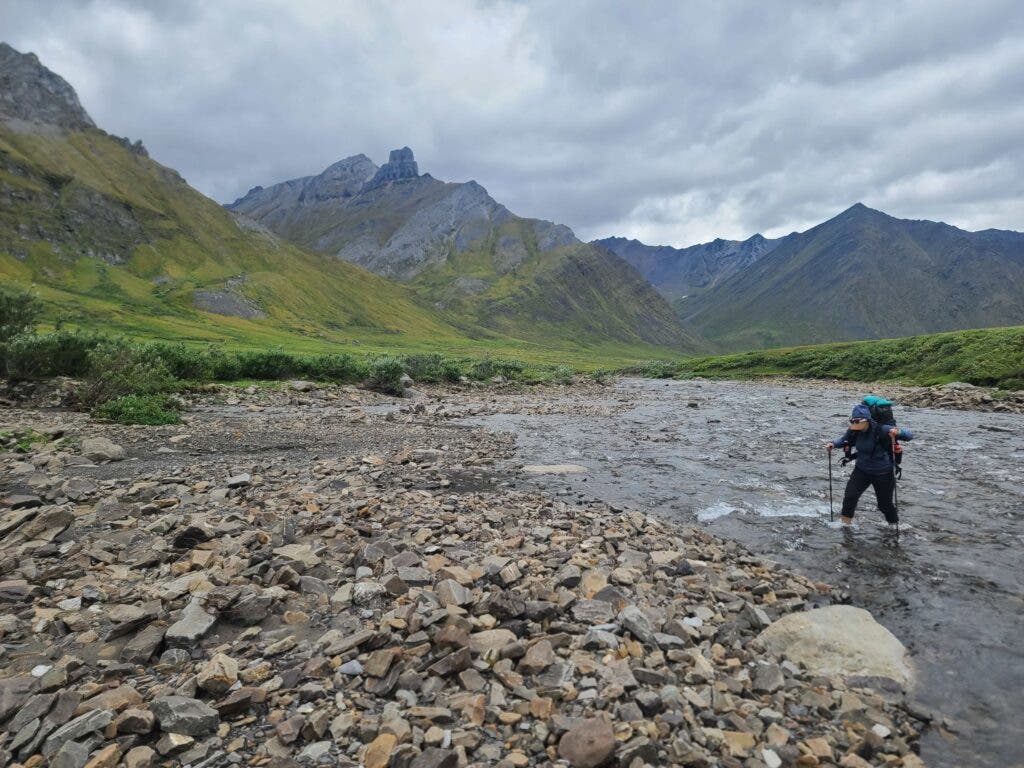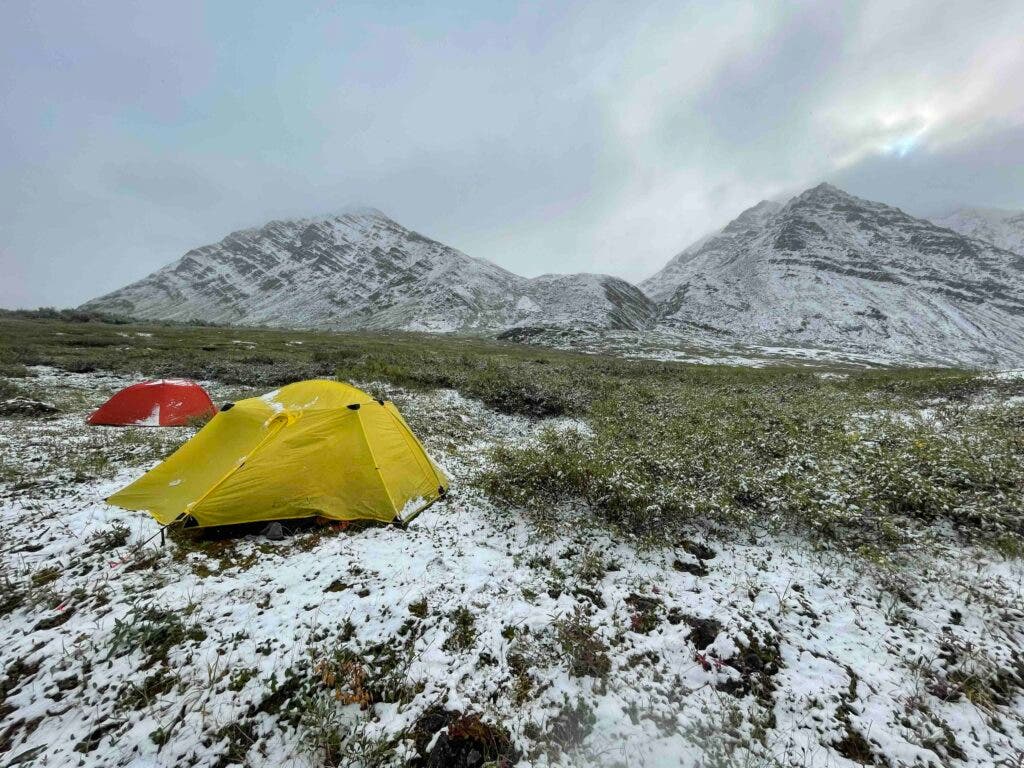If you buy through our links, we may earn an affiliate commission. This supports our mission to get more people active and outside.Learn about Outside Online's affiliate link policy
6 Arctic-Tested Essentials I'll Never Camp in the Cold Without

(Photo: Connor Boschert)
For my first backpacking trip to Alaska, I knew I’d need to have my kit dialed. The plan was to spend a week hiking off-trail in Gates of the Arctic National Park in late August, where conditions can range from mild and sunny to downright wintry. As the trip dates approached, I watched the forecast deteriorate: The week before our arrival, temps hovered in the 70s. But for our hike, the forecast called for rain, snow, and lows in the 20s. This would be no summer walk in the park.
Now that I’ve had the opportunity to reflect on my choices and how they shook out, I’ll be even more prepared in the future for wet, cold backpacking trips, whether in the far north or closer to home. Here’s the gear I was very happy to have on my backpacking trip in the Arctic.
Neoprene Socks
I’d read that hiking on the tundra means that your feet will never be dry, and this turned out to be true. I agonized over whether to bring boots or trail runners, ultimately landing on the latter because I knew we’d face countless river crossings where I’d surely overtop and waterlog my boots. But as someone with constantly cold feet, I worried about wearing wet trail runners all day in the 30s and 40s. My solution? A pair of NRS Wetsocks. These socks are designed for paddlers but are thin enough that they fit well inside my hiking shoes, even when doubled up with a pair of wool socks. While they didn’t prevent my feet from getting wet, they added enough warmth to keep me comfortable even while crossing rivers during a snowstorm.

Waterproof Gloves
It’s no surprise that I also suffer from poor circulation to my hands, which makes camp chores a drag in the cold. The Showa Temres 282-02 are beloved by skiers and mountaineers in the Pacific Northwest because their polyurethane coating actually locks out moisture—unlike Gore-Tex and other waterproof ski gloves that are prone to wetting out over time. I wore my Showas while hiking in a frigid drizzle and was grateful to have them when refilling my water filter in glacier-fed streams. During dryer spells, I hiked in a pair of wool glove liners.
A Warm Sleeping Pad
Sleeping cold is always a source of anxiety on shoulder season backpacking trips, so I decided not to mess with my summerweight ultralight sleeping pad. Instead, I packed my beefy Nemo Cosmo Insulated pad, which claims to provide comfort down to 15°F. Nemo doesn’t make this pad anymore (the integrated foot pump was a misguided innovation that didn’t last) but the Quasar 3D Lightweight Insulated Sleeping Pad, with an R-value of 3.3, is similar. While I sacrificed some weight to bring a warmer pad, I slept comfortably and was glad for the extra cushioning, especially as we spent long hours in the tent waiting out poor weather. (I paired the Cosmo with my Sea to Summit Spark 18°F Ultralight Sleeping Bag. The current equivalent on the market is rated for 15°F.)

An e-Reader
Foul weather meant plenty of time tentbound, and I was glad to have my Kindle Oasis to keep me busy. I pre-downloaded half a dozen books and looked forward to cozying up in my sleeping bag to read each evening. The model I have is waterproof and weighs in at 6.6 ounces (lighter than most paperbacks) and slides worry-free into my backpack. Looking forward to a good story was the morale boost I needed when the hiking got difficult.
A White Gas Stove
The only way to access Gates of the Arctic National Park is via air taxi or charter bush plane, none of which allow pressurized fuel canisters. Instead, we borrowed a Primus Omnifuel Multi-Fuel stove from a friend, since the air service allowed us to fly with unpressurized bottles of white gas. (I’m also a fan of the MSR WhisperLite, which is popular for its ease of disassembly for field maintenance.) Liquid fuel stoves are also more reliable than their isobutane counterparts in very cold temperatures.
High-Calorie Dinners
In my pre-trip research, I read stories from a handful of bloggers who claimed that hiking in the Arctic made them even hungrier than typical backpacking trips. Maybe it’s the cold, constant wetness, or physical demands of moving off-trail over uneven and often unsupportive terrain. So, I decided to up my daily calorie allotment, aiming for 4,000 calories per day based on my age, weight, pack weight, and the conditions. I ended up eating almost all of the food I packed, just as those bloggers had predicted. Luckily, I’d diligently read food labels, calculated everything in a spreadsheet, and chosen pouched dinners that would pack a punch for their size and weight. My favorites include Kimchi Jigae and Drunken Noodles from Stowaway Gourmet (700 to 750 calories per pouch).